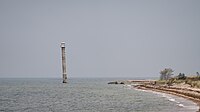
Spurn is a narrow sand tidal island located off the tip of the coast of the East Riding of Yorkshire, England that reaches into the North Sea and forms the north bank of the mouth of the Humber Estuary. It was a spit with a semi-permanent connection to the mainland, but a storm in 2013 made the road down to the end of Spurn impassable to vehicles at high tide.

Paldiski is a town and Baltic Sea port situated on the Pakri Peninsula of northwestern Estonia. Since 2017, it's the administrative centre of Lääne-Harju Parish of Harju County. Previously a village of Estonia-Swedes known by the historical name Rågervik, it was extended into a Russian naval base in the 18th century. The Russian authorities renamed it Балтийский Порт in 1762. In written Estonian, the name was spelled Baltiski until 1933, when the phonetically spelled version Paldiski became official.

The Cape Schanck Lighthouse was built in 1859 as the second coastal lighthouse in the Australian state of Victoria. It is located on Cape Schanck, at the southernmost tip of the Mornington Peninsula. The 21 metres (69 ft) tall tower was built from limestone. The light's focal plane is situated 100 metres (330 ft) above sea level, the light characteristic is the Morse code letter "N", a long signal of 10.8 seconds followed by a flash. Depending on the bearing of the light, the colours are either white or red. Due to its powerful lantern of one million candela and a first order Fresnel lens, which was installed in 1915, the light has a range of 26 nmi (48 km).

Rubjerg Knude Lighthouse is on the coast of the North Sea in Rubjerg, in the Jutland municipality of Hjørring in northern Denmark. It was first lit on 27 December 1900. Construction of the lighthouse began in 1899.

Hartland Point is a 325 ft (99 m) high rocky outcrop of land on the north-western tip of the Devon coast in England. It is three miles (5 km) north-west of the village of Hartland. The point marks the western limit of the Bristol Channel with the Atlantic Ocean continuing to the west. This location was known to the Romans as the "promontory of Hercules".
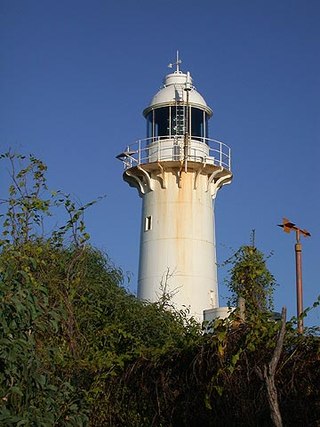
Cape Leveque is at the northernmost tip of the Dampier Peninsula in the Kimberley region of Western Australia. Cape Leveque is 240 kilometres (150 mi) north of Broome, and is remote with few facilities. Nevertheless, the Cape's sandy beaches are attracting an increasing number of visitors.

Kõpu Lighthouse is one of the best known symbols and tourist sites on the Estonian island of Hiiumaa. It is one of the oldest lighthouses in the world, having been in continuous use since its completion in 1531. The lighthouse is quite unique with its shape and exceptional among lighthouses because it has gone through all the stages from a medieval landmark up to a modern electrified lighthouse.

Harilaid Peninsula is a peninsula on the northwest coast of the island of Saaremaa in Estonia. It should not be confused with the islet of Harilaid which lies between the islands of Vormsi and Hiiumaa.

Hellisøy Lighthouse is a coastal lighthouse in Fedje municipality in Vestland county, Norway. The lighthouse lies on the small island of Hellisøy, just off the southwest coast of the larger island of Fedje.
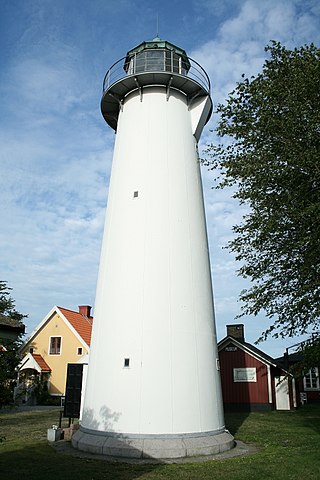
Smygehuk Lighthouse is a lighthouse in Trelleborg Municipality in Sweden. It is situated approximately 1.5 kilometres (0.93 mi) west of Smygehamn, and is 17 metres (56 ft) high and constructed of iron. It was completed in 1883, and taken out of service in 1975 in favor of the offshore Kullagrundet Lighthouse. Following an initiative by Trelleborg Municipality, among others, it was relit in April 2001. Smygehuk Lighthouse is located at Smygehuk, near the southernmost tip of Sweden and the Scandinavian Peninsula.

Hartland Point Lighthouse is a Grade II listed building at Hartland Point, Devon, England. The point marks the western limit of the Bristol Channel with the Atlantic Ocean continuing to the west. Trinity House, the lighthouse authority for England and Wales, have a lighthouse on the tip of the peninsula.
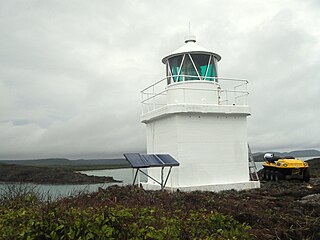
Eborac Island Light is an active lighthouse on Eborac Island, a small rocky island in the Adolphus Channel just off Cape York, the northern tip of Cape York Peninsula, Far North Queensland, Australia. It guides ships into the coastal channel inside the Great Barrier Reef. A concrete structure was built in 1921 and converted to solar power in 1990. It was replaced with a fiberglass structure in 2012.

Keri Lighthouse is a lighthouse in the Gulf of Finland on Keri Island. The light itself is at an elevation of 31 metres (102 ft) above sea level, while the lighthouse itself is 28 metres (92 ft) tall.

Hammeren Lighthouse is located on the Hammeren peninsula on the northwestern tip of the Danish island of Bornholm.

Niechorze Lighthouse is a lighthouse in Niechorze, on the Polish coast of the Baltic Sea, by a steep cliff. The lighthouse is located in Niechorze, West Pomeranian Voivodeship, in Poland.

Juminda Lighthouse is a lighthouse at the northern tip of the Juminda Peninsula, Kuusalu Parish, in the region of Harju, Estonia. It is located in the Lahemaa National Park.
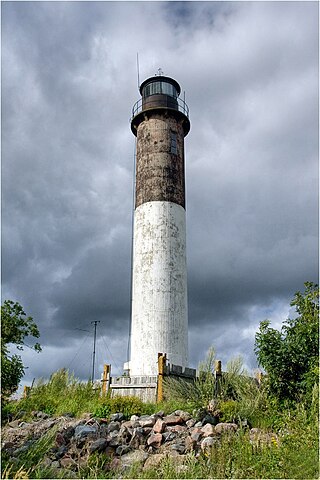
Kübassaare Lighthouse is a lighthouse located in Kübassaare Peninsula, in the easternmost point of Saaremaa; in Estonia. The lighthouse is 18 metres in height, a round cylindrical concrete tower with a lantern and gallery. The current lighthouse had a height of 11 metres, before it was extended to 18 metres in 1939. The lighthouse has a glare configuration of: 2.5 s glare, 6.5 s off.

Pakri Lighthouse is a lighthouse located on the Pakri Peninsula, Harju County, in Estonia.

Tahkuna Lighthouse is a lighthouse located in the Tahkuna Peninsula, Hiiu Parish, on the island of Hiiumaa, in Estonia.
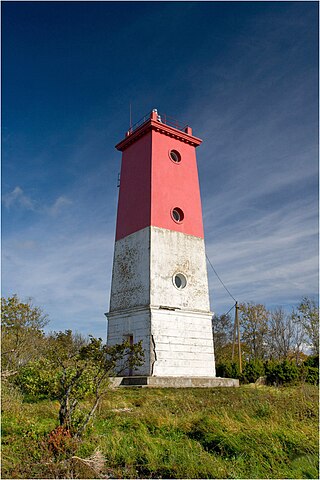
Virtsu Lighthouse is a lighthouse located in Virtsu, Lääne County, in Estonia. The lighthouse is used as a signal for the Suur Strait.



